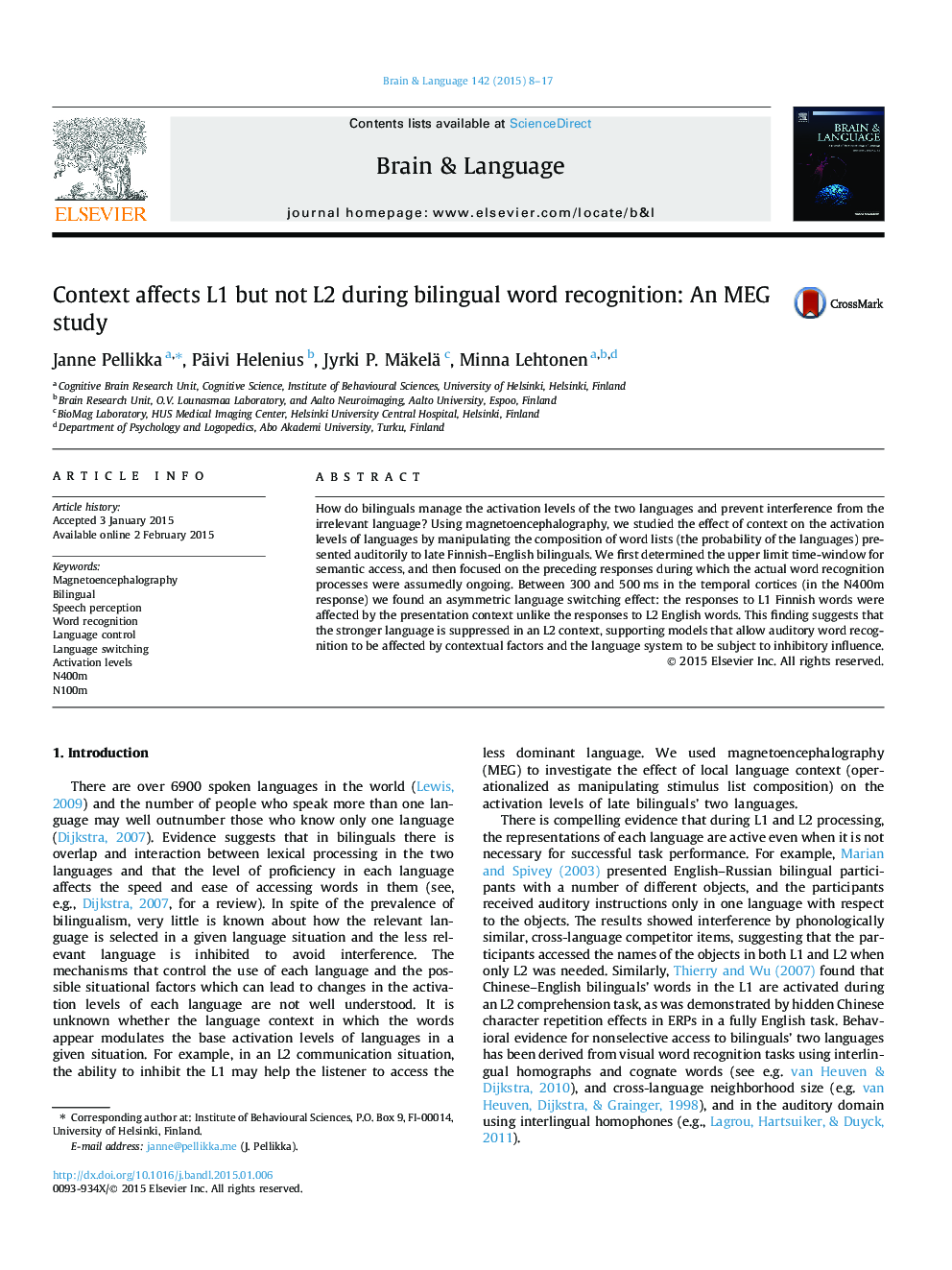| Article ID | Journal | Published Year | Pages | File Type |
|---|---|---|---|---|
| 7284353 | Brain and Language | 2015 | 10 Pages |
Abstract
How do bilinguals manage the activation levels of the two languages and prevent interference from the irrelevant language? Using magnetoencephalography, we studied the effect of context on the activation levels of languages by manipulating the composition of word lists (the probability of the languages) presented auditorily to late Finnish-English bilinguals. We first determined the upper limit time-window for semantic access, and then focused on the preceding responses during which the actual word recognition processes were assumedly ongoing. Between 300 and 500Â ms in the temporal cortices (in the N400m response) we found an asymmetric language switching effect: the responses to L1 Finnish words were affected by the presentation context unlike the responses to L2 English words. This finding suggests that the stronger language is suppressed in an L2 context, supporting models that allow auditory word recognition to be affected by contextual factors and the language system to be subject to inhibitory influence.
Keywords
Related Topics
Life Sciences
Neuroscience
Biological Psychiatry
Authors
Janne Pellikka, Päivi Helenius, Jyrki P. Mäkelä, Minna Lehtonen,
